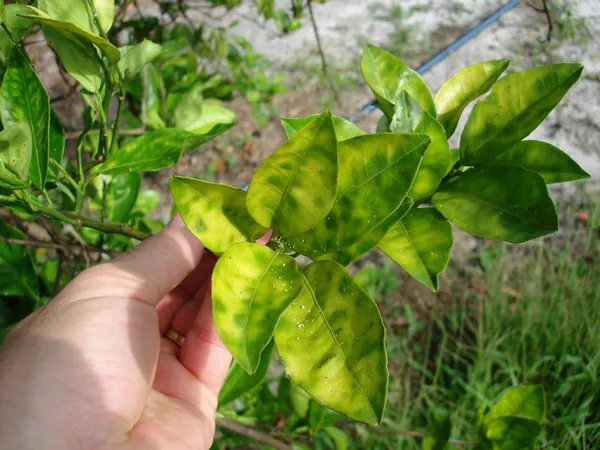The California Department of Food and Agriculture (CDFA) has declared a quarantine in north San Diego County following the detection of the citrus disease Huanglongbing (HLB), or citrus greening, in two citrus trees on one residential property in the city of Oceanside. This is the first time the plant disease, which does not harm people but is deadly to citrus, has been detected in San Diego County. CDFA is working with the United States Department of Agriculture (USDA) and the San Diego County Agricultural Commissioner on this cooperative project.
As of Tuesday, Aug. 10, the boundaries of the San Diego County HLB quarantine have been revised to include a full 5-mile radius around the detections in Oceanside. The new boundaries of the quarantine zone encapsulates a 68-square mile quarantine area and is bordered on the north by Stagecoach Road in Camp Pendleton; on the south by Tamarack Avenue in Carlsbad; on the west by the Pacific Ocean; and on the east by North Santa Fe Avenue in Vista.
HLB quarantine maps for San Diego County are available online at: https://www.cdfa.ca.gov/plant/hlb/regulation.html. Please check this link for future quarantine expansions, should they occur. An HLB quarantine area currently exists in parts of Orange, Los Angeles, Riverside and San Bernardino counties, where more than 2,400 trees have tested positive for the disease and have been removed.

The quarantine prohibits the movement of all citrus nursery stock or plant parts out of the quarantine area. Provisions exist to allow the movement of commercially cleaned and packed citrus fruit. Fruit that is not commercially cleaned and packed must not be moved from the property on which it is grown, although it may be processed and/or consumed on the premises. This includes residential citrus, such as oranges, lemons, grapefruit and kumquats.
CDFA staff are scheduling removal of the infected trees and are in the midst of surveying citrus trees in a 250-meter radius around the detection site to determine if any other trees are infected with HLB. A treatment program for citrus trees to reduce Asian citrus psyllid infestations will also be conducted within 250-meter radius of the find site. By taking this action, a critical reservoir of the disease and its vectors will be removed, which is essential to protect surrounding citrus from this deadly disease.
CDFA, in partnership with the USDA, local County Agricultural Commissioners, and the citrus industry, continues to pursue a strategy of controlling the spread of the Asian citrus psyllid while researchers work to find a cure for the disease.
Contact:
Steve Lyle
CDFA
Tel: 916-654-0462
Email: officeofpublicaffairs@cdfa.ca.gov
